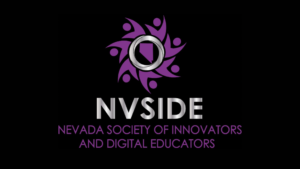Mastery Learning Objectives and Mastery Thresholds in the Classroom

By: Scott Ellis
To implement mastery learning and enable students to move forward at their own pace as they master content, five elements must be in place. It does not matter whether they are in MasteryTrack or another system, but without them, mastery learning at scale is not possible.
- Specific, clear, demonstrable learning objectives.
- Clear mastery thresholds for each learning objective (what a student needs to do to demonstrate mastery).
- Clear processes for students to demonstrate mastery.
- Clear processes for teachers to assess mastery.
- A system to effectively organize and display the data about mastery-based student learning progress.
Over the last several years, we have partnered with over 100 schools to implement mastery dashboards for over 10,000 students in a wide range of subjects. Although our focus is the U.S., our journey has taken MasteryTrack to Europe, Singapore, China, and other markets across Asia. Some schools are in their fourth year of implementation. Through this journey we have learned a tremendous amount about these five elements, what success looks like, and the kinds of challenges we face in bringing them to life at scale. The critical starting point, and in my view the foundation for mastery learning, is the first two elements: learning objectives and mastery thresholds.
Mastery Learning Objectives are Critical
Learning objectives are the critical starting point for mastery learning. As educators, we must be crystal clear what we want students to know and be able to do once the learning process has finished. These objectives must be specific, clear, and demonstrable: everyone must know exactly what the objectives are and the learner must be able to demonstrate that they have learned them.
Most existing standards do not enable mastery learning because they are not specific, clear, and demonstrable. On the contrary, many are high-level and intentionally vague, and some have multiple parts. I have had multiple conversations with schools using traditional models in which teachers of the same subject in the same grade did not agree about what they were supposed to teach students. On the other hand, I recently talked with an educator who had implemented MasteryTrack along with her colleagues and she shared that one of their most powerful initial experiences was talking together as an instructional team about what exactly they each wanted their students to learn. They quickly identified several differences (some minor nuances and some deep philosophical disagreements) but the requirement of specific, clear, demonstrable learning objectives helped them have focused professional instructional strategy conversations and come to an agreement about exactly which objectives they were all going to use.
A teacher who implemented MasteryTrack last year shared with me how surprised he was to discover that his students did not know or understand their learning objectives–in some cases they were able to execute the desired skill but could not explain what it was! As a result, he changed his teaching approach and began the learning process for new content by ensuring that the students actually understood the learning objective. This clarity about the desired outcome of learning is absolutely critical to student success.
Mastery Learning Examples to Consider
To illustrate how difficult it is to apply mastery learning concepts with current standards, consider this English Language Arts standard: “Determine a theme of a story, drama, or poem from details in the text; summarize the text.” This is actually six different objectives—determining a theme is different than summarizing a text, and stories, dramas, and poems are different from each other. (We could take the magic word ‘or’ seriously, but then an educator might conclude that they don’t need to teach poetry. This interpretation seems unlikely). It is easy to be confused about what teachers need to teach and what students should be learning.
In order to eliminate this confusion, we should be clear about what we want students to know and be able to do once learning has successfully occurred. While it can be feasible to combine multiple skills or areas of content knowledge into a single learning objective, we should be clear what we mean (and if we write ‘or,’ we must be certain we mean it).
Or consider these math standards: “Recognize that in a multi-digit whole number, a digit in one place represents ten times what it represents in the place to its right” and “Interpret a multiplication equation as a comparison, e.g., interpret 35 = 5 x 7 as a statement that 35 is 5 times as many as 7 and 7 times as many as 5.” How might a student demonstrate that she has mastered these objectives? I have not been able to come up with a better approach than solving problems effectively.
If we cannot develop specific, clear ways for students to demonstrate mastery of these concepts besides solving problems successfully and fluently, is it more appropriate to consider these as instructional approaches toward objectives like “Round three-digit numbers to the nearest ten” or “Multiply two one-digit numbers” rather than standalone learning objectives? I think so.
Setting Mastery Learning Thresholds Benefits Students
Every learning objective must have a clear mastery threshold. In a mastery-based system, teachers no longer move students forward to the next learning objective simply based on the calendar. In today’s world, teachers may just have to give the student a C+ and start teaching the next topic because it’s Tuesday and the district pacing guide says it is time to move on.
Instead, students move forward only once they have mastered a learning objective. In order for this to work, students and teachers must know what it means for a student to ‘master’ an objective. The mastery threshold must be defined and clear. In some cases the threshold is actually embedded into the learning objective itself (e.g., this is the case for many objectives in Spanish Interpersonal Oral).
The first step in defining mastery thresholds is to determine the type of demonstration a student will use for a particular objective, activities like giving a presentation, writing an answer, solving a problem, or completing a project. For example, for an objective in math like “multiply two one-digit numbers” an appropriate approach for a student to demonstrate mastery might be to accurately and fluently solve problems. For an English objective like “Determine a theme of a story” a student would write a response or perhaps give an oral response or presentation. For an objective in social and emotional learning like “Treat others’ belongings with respect” the approach is more complex and would include three parts: the student must demonstrate that he knows what it means to treat others’ belongings with respect (write something or give an oral response), show that he can do it once (show he is capable of taking the action), and then do it consistently.
In the MasteryTrack system, for many math examples I have set the mastery threshold as nine problems out of ten correct within a generous time limit. For more advanced and time-consuming problems like “Multiply two three-digit numbers” the threshold is four correct out of five—since students already know how to multiply and it takes so long to do this type of problem, it seems unnecessary to require them to solve ten problems.
Mastery Learning Objectives and Mastery Thresholds Are Closely Linked
For some objectives, the mastery threshold is somewhat incorporated in the wording of the objective itself. I spent several months working with a wonderful Spanish educator to create an entire mastery-based structure for a Spanish Interpersonal Oral course. Lower level objectives are relatively straightforward—for example, “Answer six memorized closed questions about self using phrases.”
There is lots of specificity in this objective: six questions, memorized (rather than original), closed (rather than open), using phrases rather than either single sentences or paragraphs. Because of the nature of the wording, the mastery threshold is clear and inherent in the learning objective. This is also true for more advanced learning objectives, such as “Answer two open, original questions that call for the description of familiar people with lists of sentences containing two or more sentence patterns and some detail.” This level of clarity enables students and teachers to understand what learning we hope to achieve and how we will know if it has occurred.
Once learning objectives and mastery thresholds have been established, we can move on to the rest of the key elements of mastery learning. But these first two elements are the skeleton that provides structure for the entire system. Once they are in place we are ready to establish the other key elements: how students demonstrate mastery, how teachers assess mastery, and how to organize and display the data.
For more, see:
- Four Mega Trends Reshaping Global Learning
- Smart Review | MasteryTrack: Powering Competency-Based Learning
- Scaling Competency-Based Education: Equity-Focused Strategies for Policy and Practice
This blog is part three of a series on mastery learning, sponsored by MasteryTrack. If you’d like to learn more about our policies and practices regarding sponsored content, please email Jessica Slusser. For other posts in the series see:
Stay in-the-know with all things innovations in learning by signing up to receive our weekly Smart Update.
Scott Ellis is the Founder and CEO of MasteryTrack. You can find him on Twitter @MasteryTrack.







0 Comments
Leave a Comment
Your email address will not be published. All fields are required.